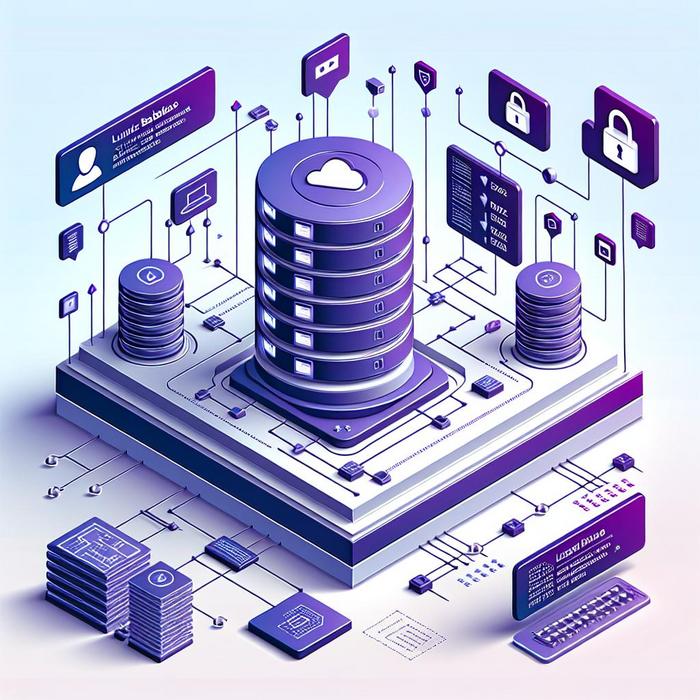Table of Contents Hide
Securing Genetic Information in Zinc Finger Database
 6 MIN. READING
6 MIN. READING
How Secure Is Your Zinc Finger Database?
A confluence of buzzing curiosity surmounts the topic of security features for Zinc Finger Databases. Are the treasured genetic data residing in your repository impregnable? Or are they an easy target for malicious entities? This discussion will provide a fresh perspective on strengthening your data infrastructures, wherein the Zinc Finger Databases hold a vital place.
The Intricacies of Database Virtualization
Zinc Finger Databases, like other data repositories, greatly benefit from database virtualization. Database virtualization is a powerful tool that enables unified access to data across different sources. This capability inherently accelerates tasks such as data provisioning and simplifies data operations by allowing efficient management of genetic information from anywhere, anytime. But, are these benefits shielded with robust data security?
Critical Role of Data Anonymization
Data anonymization plays a crucial role in securing genetic information. This process masks the data, thereby ensuring that sensitive information, such as those in a Zinc Finger Database, remains unidentifiable. In essence, this technique keeps the genetic data while discarding personally identifiable information; therefore, it secures data privacy while allowing the data to remain useful.
Recent studies have shown the wide range of applications of data anonymization in different fields, including biomedical research, where genetic information security is paramount. Scientists are increasingly utilizing data anonymization to unlock more value from their data while ensuring that data privacy and security policies are met.
Data Provisioning: A Double-edged Sword?
While data provisioning is a vital tool, it does pose a risk if not handled correctly. Efficient data provisioning enables easy access to genetic repositories for testing, development, and analytics. However, if data security measures are not built into the process, it can lead to accidental data breaches. Employing security tools and strategies, such as encryption and two-factor authentication, together with smart data anonymization, can help mitigate the risk.
Finding the Right Balance
Striking a balance between data accessibility and data security is of paramount importance. Leaders in IT management, data architects, and others involved in strategic decision-making around data infrastructures are increasingly recognizing this. The aim is to create a system where data is easily accessible but only to those who should rightfully have access.
Regulatory Compliances, A Requisite
Compliance with data regulations is another crucial aspect of securing genetic information. Violation of data regulation laws can lead to hefty fines and damage to the company’s reputation. Therefore, compliance with data regulations not only enhances the security of your data but also safeguards your organization from potential legal repercussions.
Effective Strategies for Secure Data Operations
Understanding and implementing security measures, engaging in protected data provisioning, anonymizing your data, and adhering to data regulation laws are critical strategies to enhance the security of your Zinc Finger Database.
Within the link below, explore how agile data management strategies can optimize your data operations.
In a nutshell, securing your Zinc Finger Database is an evolving task which requires a comprehensive understanding of current trends and best practices. Whether you’re a CIO, a CTO, a data architect, or a database administrator, staying informed about the latest data security measures can ensure your genetic data stays secure and serves its intended purpose effectively.
Emerging Trends and Innovations
It’s worth noting that technology is always evolving, and innovative solutions are continuously being developed. As these advancements shape the future of genetic data management, how can they add value to your Zinc Finger Database operations?
Advanced database virtualization tools are turning the tables, offering extensive functionalities that are redefining the way genetic data is obtained, managed, and secured. For instance, sophisticated algorithms can automate the process of data anonymization with greater precision and efficiency, while analytics tools can identify potential risks and mitigate them before they escalate.
Blockchain technology is also inspiring new ways to manage genetic data, with its capability to provide secure, encrypted, and anonymized data logs that can’t be tampered with. Although this may seem far-reaching, it is an example of the innovative solutions progressing in the sphere of genetic data security.
Operating in a Multi-cloud Environment
Operating within a multi-cloud environment has become commonplace. These environments offer various advantages, such as reduced operational costs, increased scalability, and improved access to genetic data repositories.
However, with such digital transformations come increased security challenges that require a strategic approach. The key lies in leveraging the advantages of multi-cloud environments while enforcing security measures such as continuous monitoring, robust access controls, and automated threat detection mechanisms.
An in-depth piece of research on data provisioning in a multi-cloud environment can provide more insight into managing data in these settings.
Illuminating the Dark Data
Dark data, the information enterprises collect but don’t utilize, often creates challenges for many organizations. This hidden data can serve as a potential treasure trove of insights if managed effectively. Conversely, it can also become a security risk if not properly handled or deleted, especially in the sphere of highly sensitive genetic data.
The right strategies, such as employing advanced analytics and database virtualization tools, can not only uncover this dark data but can also ensure its proper utilization or safe disposal, offering a promising avenue for enhancing genetic data management.
Best Practices for Strengthening Security
A central pillar of genetic data security lies in the integration of holistic and multi-layered security architectures for your genetic database. By employing data anonymization at every level of data handling, you can add an extra layer of security that renders the demographic data devoid of personally identifiable information.
Training and awareness among employees regarding the importance and techniques of secure data handling can also go a long way in preventing unintentional data breaches. It’s essential to keep abreast with the latest research in genetic data handling to ensure your operations stay secure and updated.
The security of your Zinc Finger Database is undeniably integral. As technology evolves and your database matures, staying ahead of the curve can prove instrumental in optimizing your genetic data management practices. Implementing robust security measures, staying aware of the latest trends, and fostering a culture of security consciousness within your organization can help ensure the integrity of your data and fuel your march towards excellence in genetic data management.


